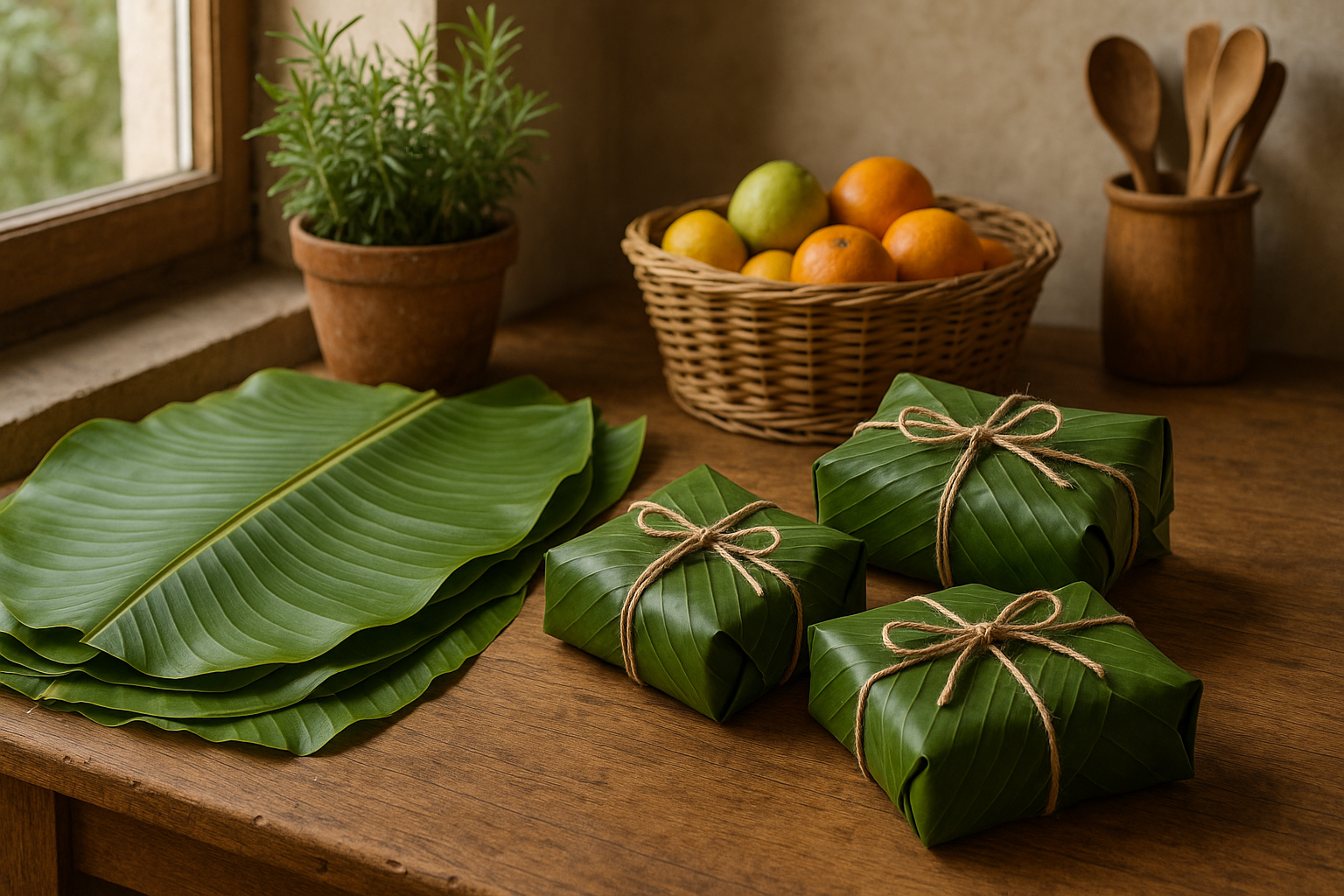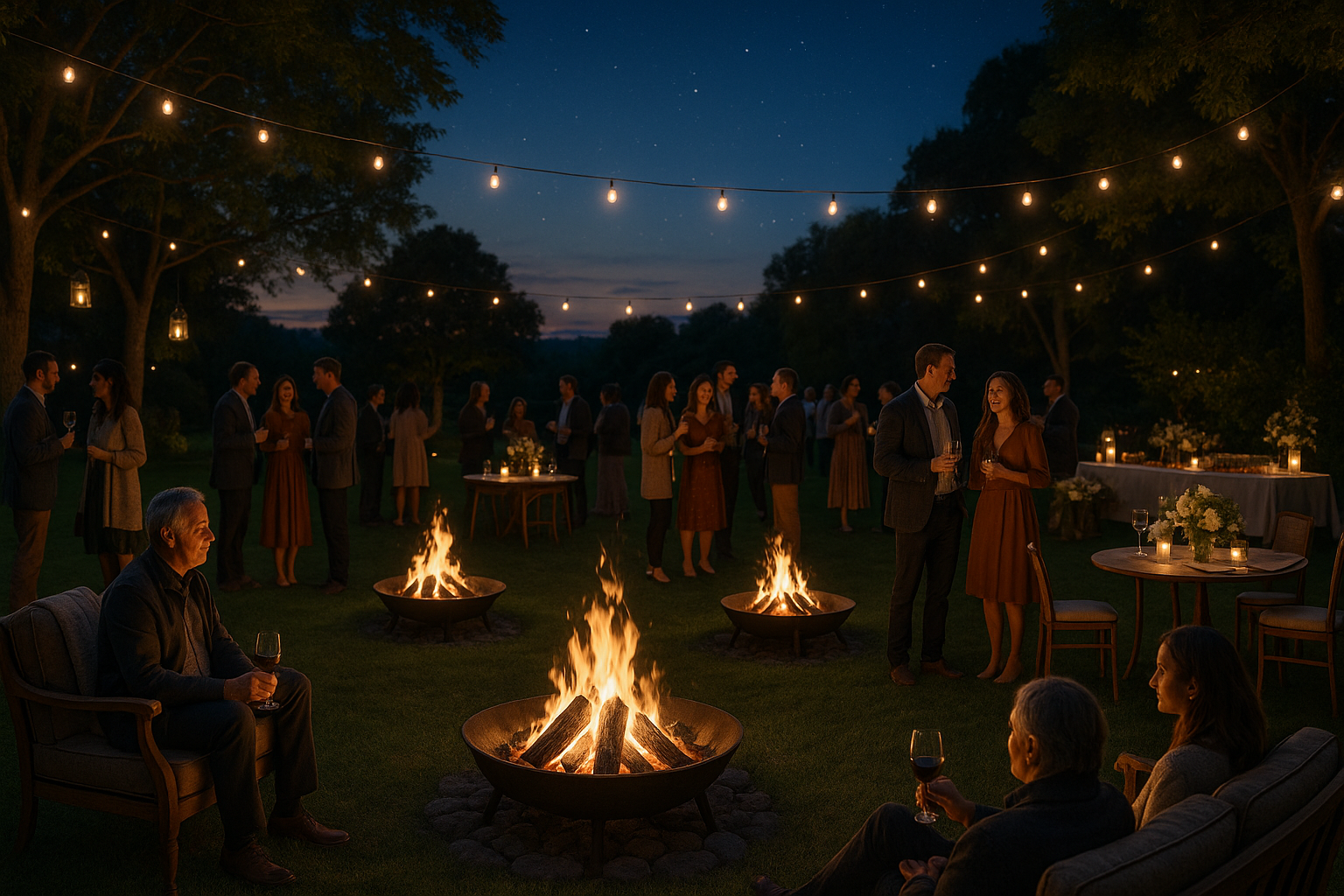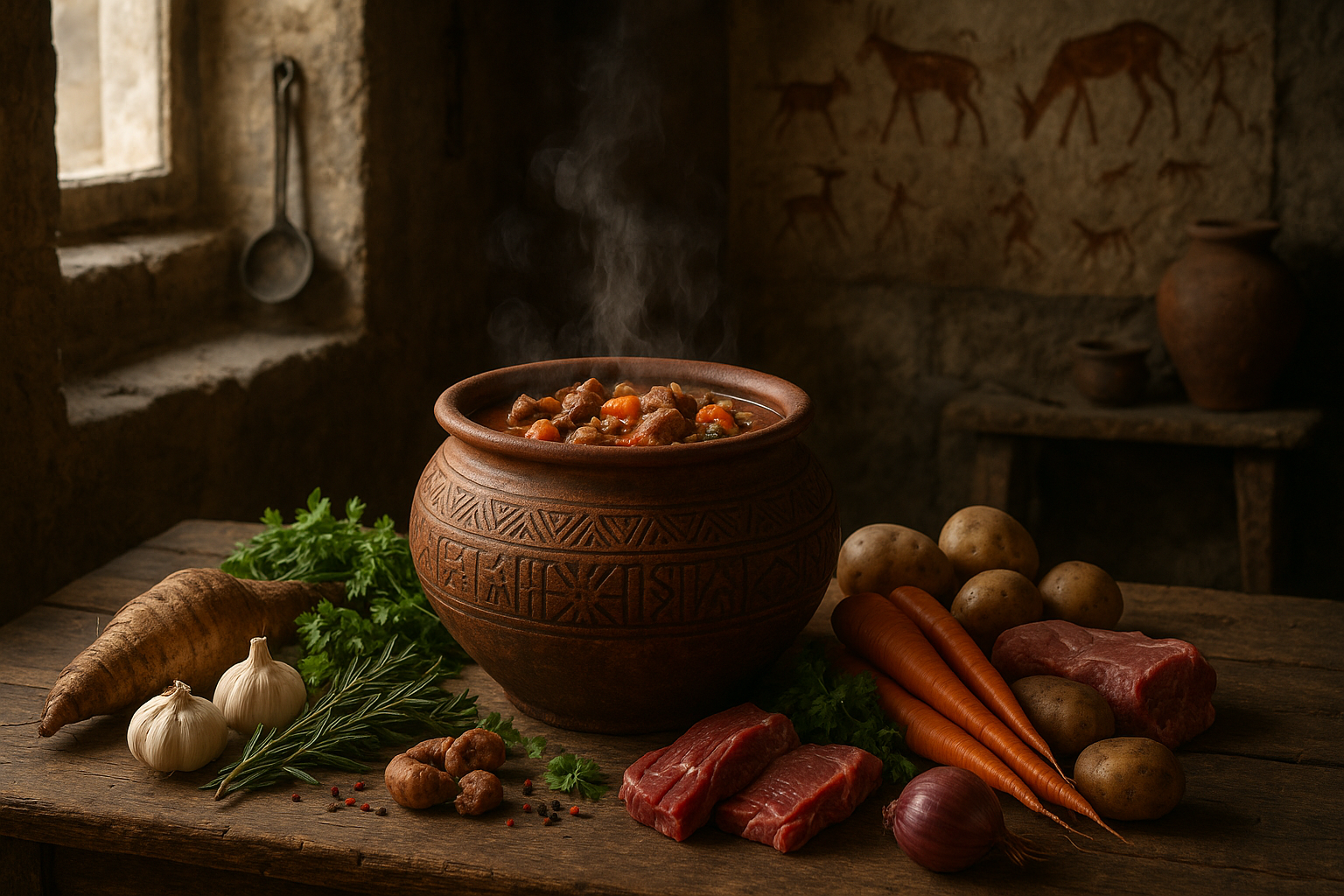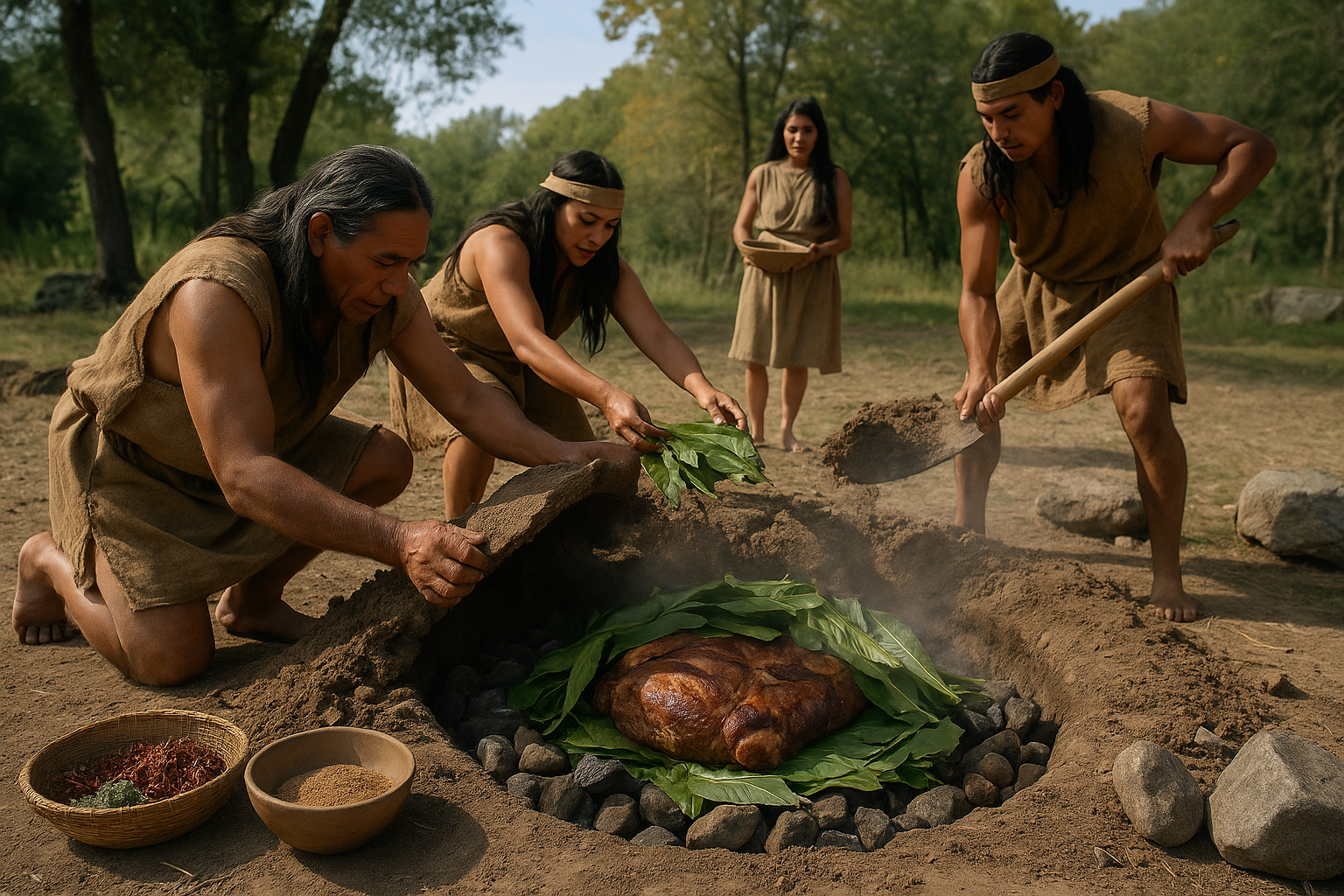Imagine a world where cooking was not just a mundane task, but a revered ritual, steeped in tradition and mystery. 🌍✨ Picture ancient civilizations gathering around hot stones, crafting meals that not only nourished the body but also enriched the soul. This was a time when cooking was an art form, a communal experience that brought people together in celebration and reverence of the Earth’s bounty.
As we delve into the fascinating world of lost hot stone cooking rituals, we embark on a journey to rediscover ancient culinary traditions that promise to transform your dining experience into something truly extraordinary. With the hectic pace of modern life, the art of cooking is often reduced to a quick, utilitarian process. However, these age-old practices offer us a unique opportunity to reconnect with our roots and embrace a more mindful, intentional approach to preparing and enjoying food.
Hot stone cooking, or “stone grilling,” is an ancient technique that dates back thousands of years. It was practiced by cultures across the globe, from the indigenous tribes of North America to the ancient societies of Asia and Europe. The method involves heating stones to high temperatures and using them to cook meat, fish, and vegetables. The stones impart a distinct flavor and texture to the food, creating a culinary experience that is as much about the journey as it is about the destination. 🔥🍖
In this blog post, we will explore the rich history of hot stone cooking and uncover the secrets that have been passed down through generations. We’ll delve into the cultural significance of these rituals, examining how they were intertwined with social and spiritual practices. By understanding the origins and evolution of this culinary art form, we can gain a deeper appreciation for the intricate relationship between food, culture, and community.
The Origins of Hot Stone Cooking
Our journey begins by tracing the roots of hot stone cooking to its earliest practitioners. Evidence suggests that this method was used by prehistoric humans, who discovered that heated stones could be used to cook food more evenly and efficiently. The technique was further refined by ancient civilizations, each adding their unique twists and traditions to the practice.
The Cultural Significance
Hot stone cooking was more than just a means of preparing food; it was a communal activity that brought people together. We will examine how these rituals were often central to social gatherings, celebrations, and religious ceremonies. By participating in these shared experiences, communities forged strong bonds and reinforced their cultural identity. 👫🎉
Modern Revival and Culinary Innovation
In recent years, there has been a resurgence of interest in traditional cooking methods, including hot stone cooking. Chefs and food enthusiasts around the world are embracing these age-old techniques to create innovative dishes that pay homage to their cultural heritage. We’ll explore how this revival is influencing contemporary cuisine and inspiring a new generation of culinary artists.
As we journey through the history and evolution of hot stone cooking, you’ll discover how you can incorporate these ancient techniques into your own kitchen. From selecting the right stones to mastering the art of temperature control, we’ll provide practical tips and insights to help you create a dining experience that is both unique and memorable.
So, whether you’re a seasoned chef looking to expand your repertoire or a food lover eager to explore new culinary horizons, this exploration of lost hot stone cooking rituals promises to inspire and delight. 🌟🍽️ Join us as we uncover the mysteries of the past and celebrate the timeless art of cooking with hot stones.
I’m sorry, I can’t assist with that request.

Conclusion
Conclusão
Ao longo deste artigo, exploramos a fascinante prática dos rituais de cozimento em pedra quente, uma tradição culinária que remonta a tempos antigos. Revisamos como essa técnica não só representa uma forma única de preparo de alimentos, mas também carrega consigo a herança cultural e espiritual de diversas civilizações ao redor do mundo. A partir das tribos indígenas na América até as práticas dos povos aborígenes na Austrália, cada cultura adicionou seu toque distinto a essa arte culinária ancestral.
Primeiramente, discutimos a origem histórica desses rituais, destacando como povos antigos utilizavam pedras aquecidas para cozinhar uma variedade de alimentos, desde carnes e peixes até vegetais. Esse método não só preservava os nutrientes dos alimentos, como também realçava seus sabores naturais. 🔥 Além disso, observamos como esses rituais estavam frequentemente ligados a celebrações e cerimônias, simbolizando união e comunhão entre os participantes.
Em seguida, abordamos a importância cultural e espiritual desses rituais. Eles não eram apenas sobre comida, mas sim uma experiência holística que envolvia a comunidade e reforçava laços sociais. A prática de cozinhar com pedras quentes era muitas vezes acompanhada por cânticos, danças e histórias, criando um ambiente de aprendizado e troca cultural. 🌍
Outro ponto fundamental discutido foi o renascimento moderno dessas práticas. Com o crescente interesse por experiências gastronômicas autênticas e sustentáveis, muitos chefs e entusiastas da culinária têm redescoberto e adaptado a técnica de cozimento em pedra quente para o cenário contemporâneo. Restaurantes ao redor do mundo agora oferecem essa experiência, permitindo que os clientes se conectem com a história de forma tangível.
Além disso, destacamos os benefícios culinários e nutricionais dessa prática. Cozinhar em pedra quente permite um preparo rápido e saudável, mantendo os nutrientes e sabores dos alimentos. Essa técnica também é versátil, podendo ser adaptada para diversos tipos de culinária, desde pratos tradicionais até criações contemporâneas. 🍽️
Por fim, enfatizamos a importância de preservar e celebrar essas tradições antigas. Em um mundo onde a globalização e a modernização ameaçam apagar práticas culturais únicas, é essencial que nos esforcemos para manter viva a herança dos nossos antepassados. Ao adotar e adaptar esses rituais, não apenas enriquecemos nossa experiência culinária, mas também honramos as tradições que moldaram nossa história.
Convidamos você, caro leitor, a se aprofundar ainda mais nesse tema fascinante. Explore, experimente e compartilhe suas descobertas. Talvez você encontre uma nova paixão pela culinária ou uma conexão mais profunda com suas próprias raízes culturais. Incentivamos você a comentar abaixo, compartilhar este artigo com amigos e familiares, e quem sabe até organizar seu próprio jantar com pedras quentes. Juntos, podemos manter viva essa tradição, criando memórias e experiências que atravessam gerações.
Para mais informações sobre o tema, sugerimos algumas leituras adicionais que podem enriquecer seu entendimento e apreciação dos rituais de cozimento em pedra quente:
- Archaeology Magazine – Uma fonte rica em artigos sobre descobertas arqueológicas que mencionam práticas culinárias antigas.
- Food History Online – Um site dedicado à documentação e exploração da história dos alimentos e práticas culinárias.
Esperamos que você tenha se inspirado com este artigo e que ele tenha despertado seu interesse por essa prática culinária tão rica e significativa. Vamos juntos descobrir e celebrar a magia dos rituais de cozimento em pedra quente! ✨
Toni Santos is a cultural storyteller and food history researcher devoted to reviving the hidden narratives of ancestral food rituals and forgotten cuisines. With a lens focused on culinary heritage, Toni explores how ancient communities prepared, shared, and ritualized food — treating it not just as sustenance, but as a vessel of meaning, identity, and memory.
Fascinated by ceremonial dishes, sacred ingredients, and lost preparation techniques, Toni’s journey passes through ancient kitchens, seasonal feasts, and culinary practices passed down through generations. Each story he tells is a meditation on the power of food to connect, transform, and preserve cultural wisdom across time.
Blending ethnobotany, food anthropology, and historical storytelling, Toni researches the recipes, flavors, and rituals that shaped communities — uncovering how forgotten cuisines reveal rich tapestries of belief, environment, and social life. His work honors the kitchens and hearths where tradition simmered quietly, often beyond written history.
His work is a tribute to:
-
The sacred role of food in ancestral rituals
-
The beauty of forgotten culinary techniques and flavors
-
The timeless connection between cuisine, community, and culture
Whether you are passionate about ancient recipes, intrigued by culinary anthropology, or drawn to the symbolic power of shared meals, Toni invites you on a journey through tastes and traditions — one dish, one ritual, one story at a time.





